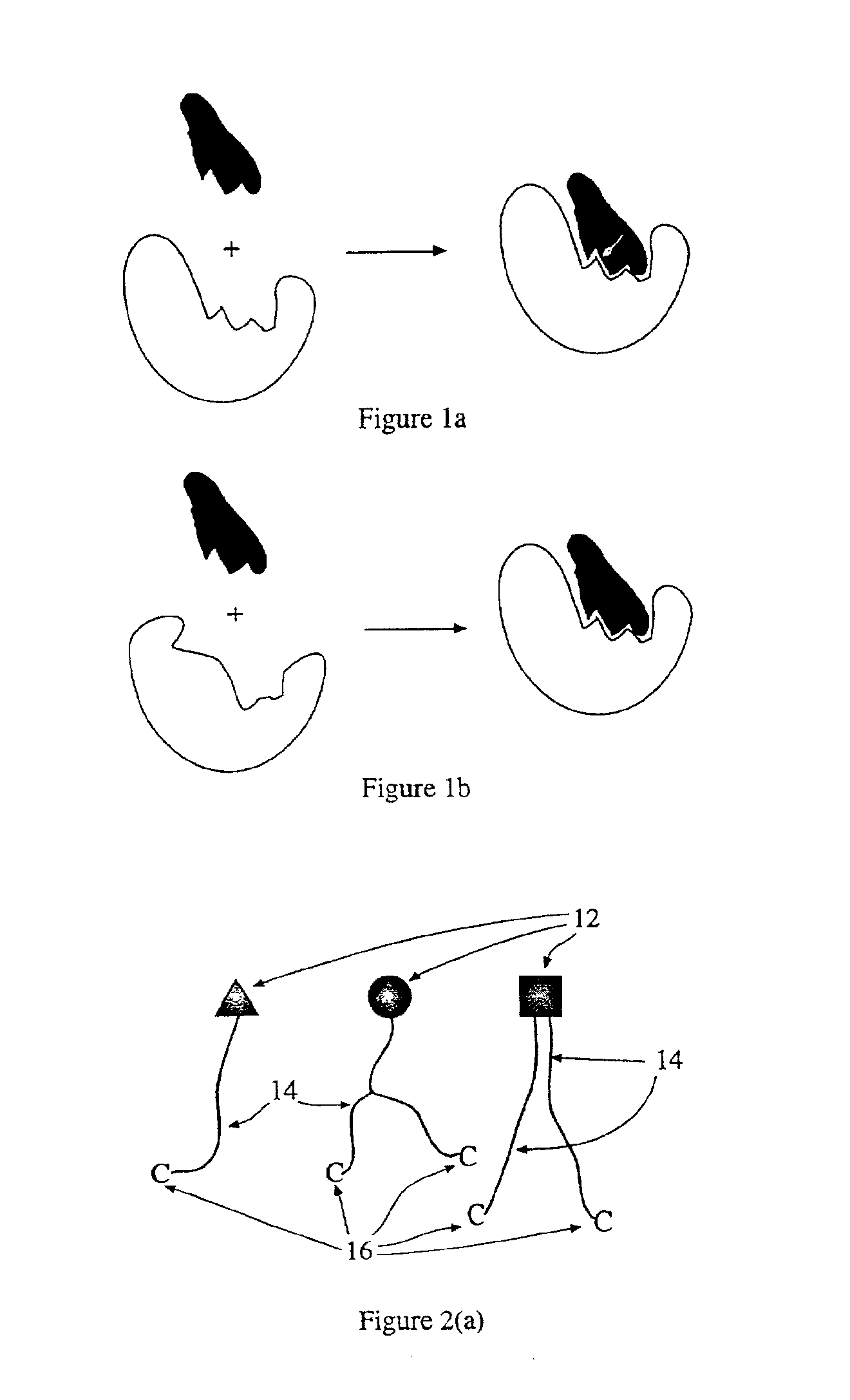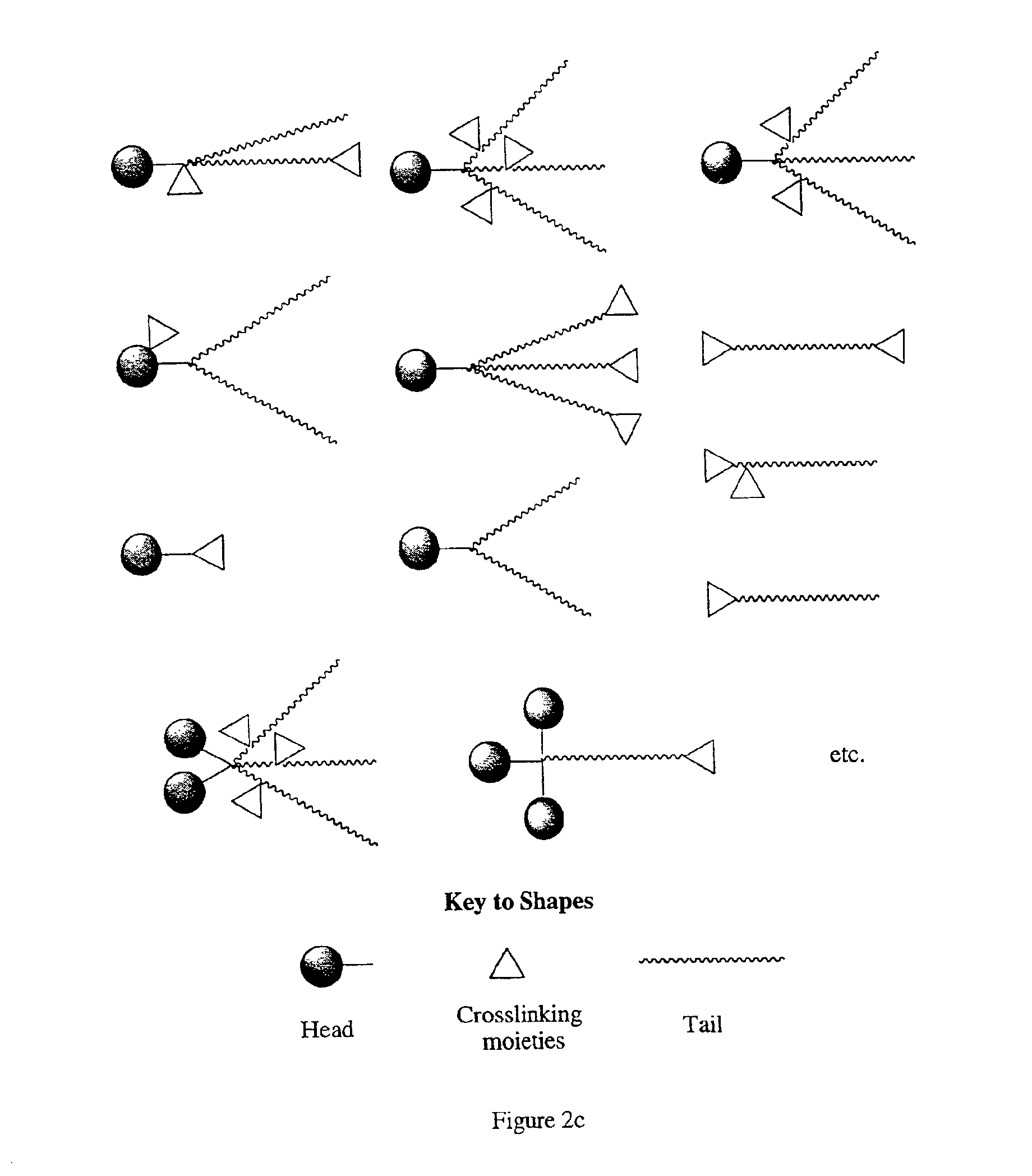Molecular compounds having complementary surfaces to targets
a technology of molecular compounds and targets, applied in the field of soluble molecular structures, can solve the problems of inefficient chain building process, increased complexity, and several intrinsic weaknesses of combinatorial chemistry
- Summary
- Abstract
- Description
- Claims
- Application Information
AI Technical Summary
Benefits of technology
Problems solved by technology
Method used
Image
Examples
example 1
Synthesis of Compound 1
[0407]A compound with a linear 11-carbon linker, as shown in FIG. 16 was prepared. 11-Bromoundecyl acrylate (1b) was prepared as disclosed in Joynes and Sherrington, Polymer, 37:1453-1462 (1996). Sulfosuccinic acid was neutralized by slow addition of tetraethylammonium hydroxide and the product was lyopholyzed. Tris(tetraethyl ammonium) sulfosuccinate (1 g) was added to 11-bromoundecylacrylate(1 mol equivalent) in anhydrous dimethylformamide (20 mL) solvent. Following 48 hours reaction at 40° C., the solvent was removed in vacuo. The crude product was dissolved in 1 ml methanol and precipitated in 10 ml 10% aqueous sodium chloride and purified by chromatography on silica (10% methanol in methylene chloride eluant).
example 2
Synthesis of Compound 2
[0408]To a solution of 2-ethyl, 1-3hexane diol (5 g, mixture of isomers, Aldrich Chemical Co.) in methylene chloride (50 ml) with 2.5 mol. equiv. excess triethylamine was added p-toluenesulfonyl chloride (0.90 mol equiv.). The mixture was stirred at room temperature until consumption of the chloride was complete by tlc. Acryloyl chloride (1 mol equiv.) was added dropwise and the mixuture was stirred an additional 48 h. The solvent was removed in vacuo and the product extracted with hexane and filtered. The filtrate was chromatographed on silica (2% ethyl acetate in hexane). The isolated 3-acryloyloxy, 2-ethyl, 3-tosylhexane was reacted with tris(tetraethylammonium) sulfosuccinate and the product purified in the same manner as described above in Example 1.
example 3
Synthesis of Anionic Compound 3
[0409]Using the above procedure described in Example 2 with 1,2-dodecanediol as the starting material, compound 3 was obtained.
PUM
| Property | Measurement | Unit |
|---|---|---|
| diameter | aaaaa | aaaaa |
| diameter | aaaaa | aaaaa |
| size | aaaaa | aaaaa |
Abstract
Description
Claims
Application Information
 Login to View More
Login to View More - R&D
- Intellectual Property
- Life Sciences
- Materials
- Tech Scout
- Unparalleled Data Quality
- Higher Quality Content
- 60% Fewer Hallucinations
Browse by: Latest US Patents, China's latest patents, Technical Efficacy Thesaurus, Application Domain, Technology Topic, Popular Technical Reports.
© 2025 PatSnap. All rights reserved.Legal|Privacy policy|Modern Slavery Act Transparency Statement|Sitemap|About US| Contact US: help@patsnap.com



